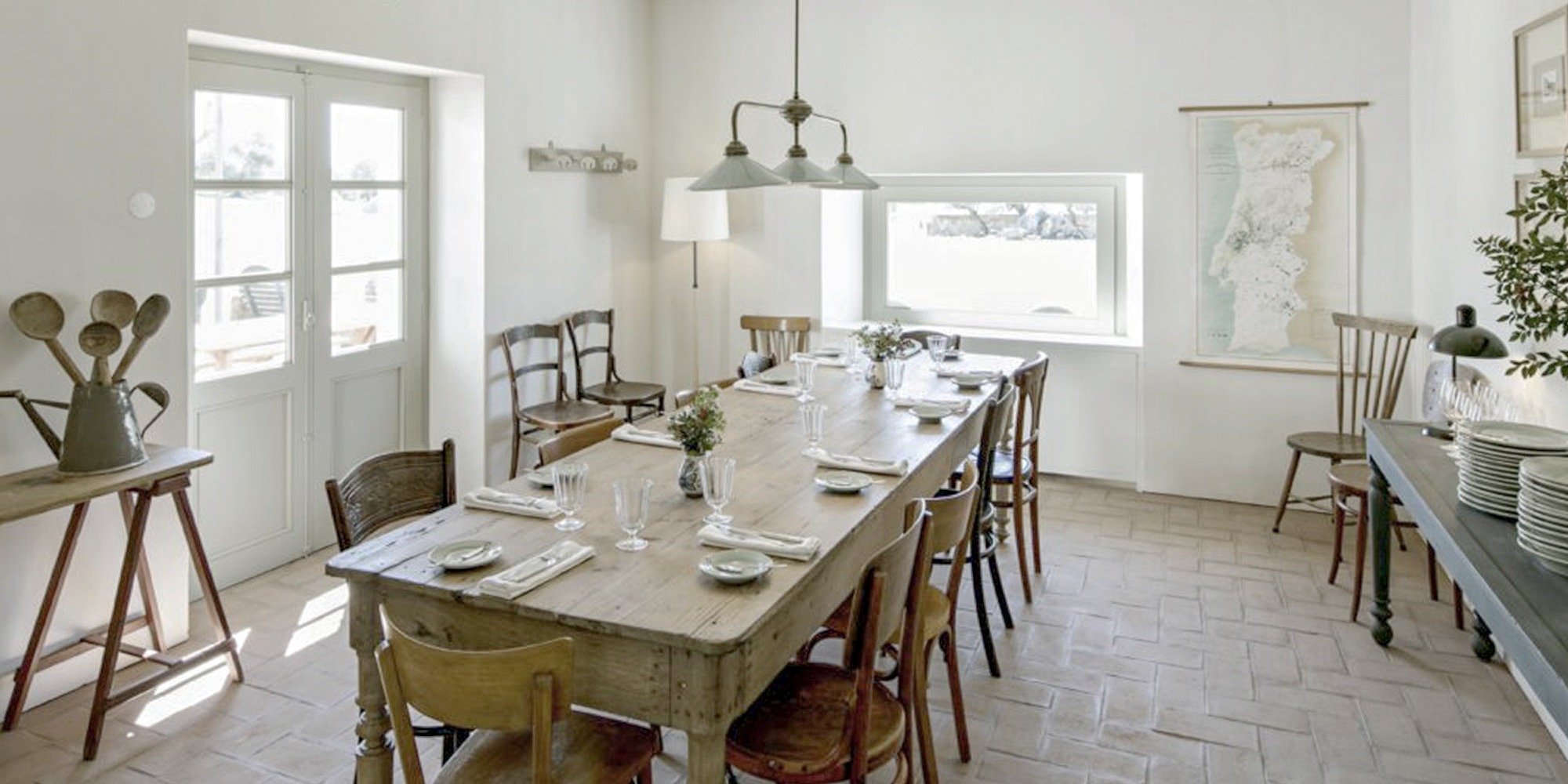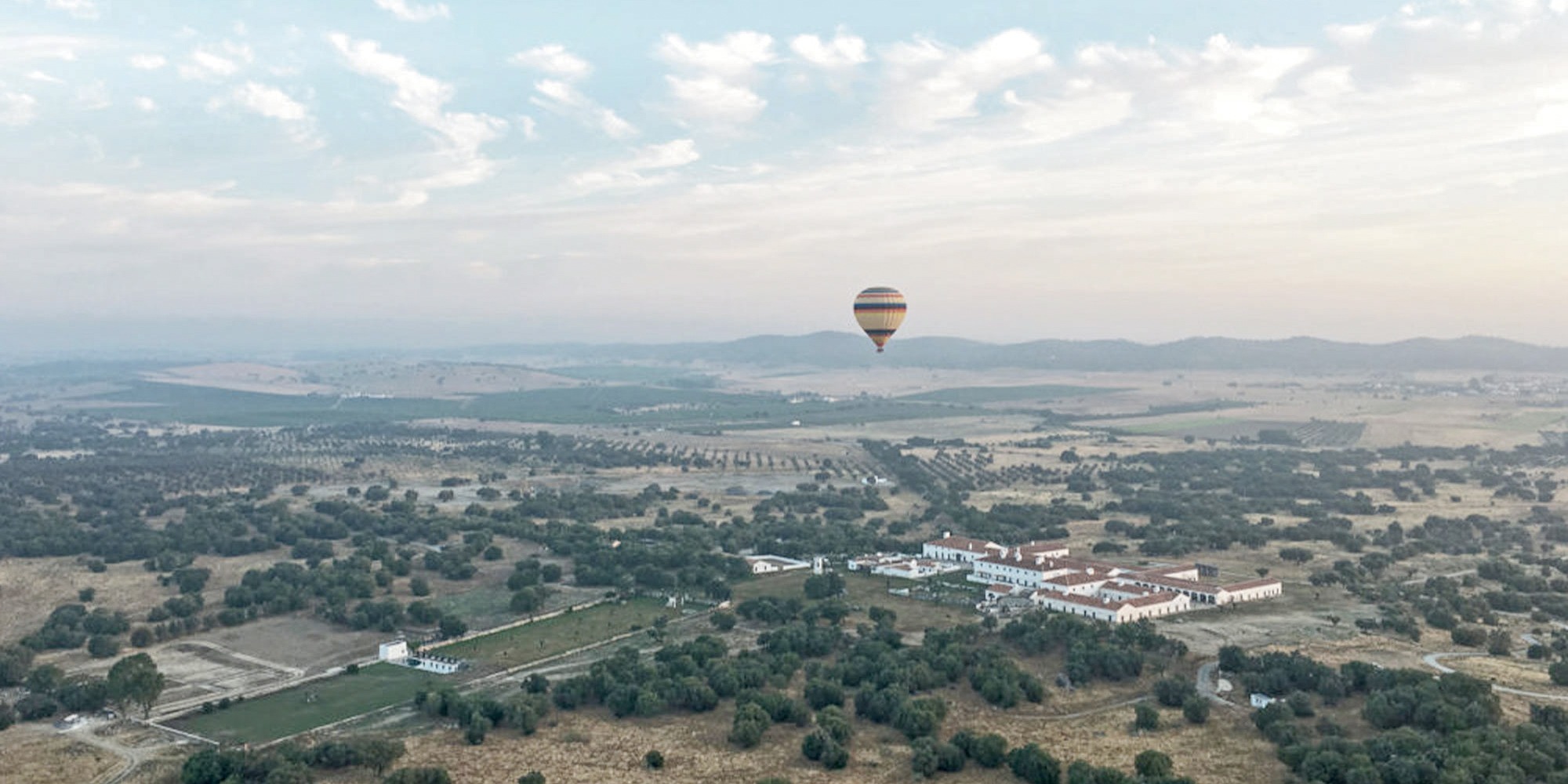Portugal’s hospitality scene has skyrocketed but who’s behind it? We talk to entrepreneur José António Uva about the art of preserving heritage and the 14-year journey to restore São Lourenço do Barrocal.

On the second floor of an elegant colonial building in the heart of Lisbon’s downtown district Baixa, José António Uva’s open-plan office spreads across a series of light-filled rooms where architects, engineers and designers pore over plans in his studio. “We just moved here last year,” he explains, guiding me to a roof terrace overlooking Baixa’s famous grid-formed streets. Seen from above, this bustling downtown area gains a new perspective. One of the world’s first examples of urban planning built after the city’s 1755 earthquake, its elegant, uniform structure guides and contains the busy commerce below. It’s an interesting parallel to Jose’s ability to reimagine his native country from a fresh perspective.
While Uva holds an MBA from Pan-Euro business school ESCP and originally worked in London as an investment banker, his soft gaze and infectious smile hints at the dreamer’s soul that lives underneath. It was this bigger vision that inspired him to return to his native Portugal 17 years ago to dedicate himself to restoring a 780-hectare derelict family farming estate in the middle of Portugal’s Alentejo, 2 hours south of Lisbon and 10 km from the Spanish border. A passion project pieced together through painstaking restoration, 14 years in the making, São Lourenço do Barrocal opened quietly in 2016. It has since been garnering a legion of loyal fans, including Monocle editor and guardian of style Tyler Brulé, who rated it as the magazine’s top Spa Hotel. Combining food sourced from the organic garden, pristine natural surroundings and an eternal lazy Sunday pace, it’s a window into the best of Portugal’s rural lifestyle.
Yet look further, and Uva’s approach to Portuguese heritage offers insights into how the country (and the world) can surf the wave of mass tourism that currently threatens to engulf it.
While Uva holds an MBA from Pan-Euro business school ESCP and originally worked in London as an investment banker, his soft gaze and infectious smile hints at the dreamer’s soul that lives underneath. It was this bigger vision that inspired him to return to his native Portugal 17 years ago to dedicate himself to restoring a 780-hectare derelict family farming estate in the middle of Portugal’s Alentejo, 2 hours south of Lisbon and 10 km from the Spanish border. A passion project pieced together through painstaking restoration, 14 years in the making, São Lourenço do Barrocal opened quietly in 2016. It has since been garnering a legion of loyal fans, including Monocle editor and guardian of style Tyler Brulé, who rated it as the magazine’s top Spa Hotel. Combining food sourced from the organic garden, pristine natural surroundings and an eternal lazy Sunday pace, it’s a window into the best of Portugal’s rural lifestyle.
Yet look further, and Uva’s approach to Portuguese heritage offers insights into how the country (and the world) can surf the wave of mass tourism that currently threatens to engulf it.
What is the story of São Lourenço do Barrocal?
São Lourenço was originally a 9,000-hectare estate set around the hilltop hamlet of Monsaraz, a stunning Medieval village in the Alentejo. The region is known as the breadbasket of the country due to its rich agriculture, yet only 5% of the population lives here. The property was privately owned for 8 generations. Then in 1975, the estate was nationalized by the government who came in after the revolution and took over the banking and farming industries. Squatters soon moved in, my parents left to Brazil and for 10 years there was nothing anyone could do. By the time we got it back in the mid-1980s, it was derelict and no one wanted to start up the farm again. I had this dream of renovating the whole estate and growing organic produce, but it was a scary prospect…You had 8,000 square meters of 200-year-old buildings that were roofless and only fit for resident cats and pigeons. I moved into a small cottage in 2002 and began researching the land, talking to geologists and biologists to form a layer of intelligence to evolve a master plan.
How did you approach the design?
The project was a collaboration between Pritzker prize-winning architect Eduardo Souto de Moura and my wife Ana Anahory’s design company, Anahory Almeida. We wanted to breathe new life into the original buildings, converting the buildings as much as possible, so it took us 3 years to collect 400,000 old wood-fired terracotta roof tiles from the surrounding villages to retile the roofs. The process was really a question of trial and error to feel into what worked where and how to live each space without having to change it very much, or worse, turn it into a pastiche. At the end of day, it had to remain what it always was. This brought all sorts of issues related to how we could bring the comfort of a 5-star hotel into something that was originally meant for simple agricultural use. How did we do it? It was very much on a case-by-case basis, there is no beautiful formula, I’m afraid! You work it out, window by window, roof by roof.
What inspired you to build a hotel?
A hotel made much more sense than a farm, as long as we could integrate the traditional way of life and not lose the deep connection to the land. Naively, I thought I could pull it off in 3 years. It took me 14. I was 26 when I started and I was 40 when we opened it. Along the way, there were some hard times when I seriously doubted if it would ever come to life. A lot of the renovations were done by hand; it was a serious labour of love.
And now?
It’s finally open! We have more than 70 people working on the estate across the farmland and hotel. There are 57 rooms in total, underpinned by a restaurant and a spa. All the food from our farm-to-table restaurant is organic and everything that we don’t produce, we select for its origin; every tomato has its story, its reason for being there, nothing is unconsidered.
How have you seen the area change during the project’s evolution?
One of the most interesting changes over the past 15 years has been the shift in agriculture from the mass production of cereal fields, vineyards and olive groves into smaller, more equality-driven permaculture estates. People are increasingly mindful of their impact and emphasise quality rather than quantity. There is a shift from commodities to self-branded produce, where everything is done on-site, from bottling your own oil to producing your own wine. It’s a big shift: a lot of shops in Lisbon are taking a more environmentally conscious approach to their products. For the first time in many, many years, Portuguese culture is celebrating itself. And this is driven by people diversifying out of traditional job roles and wanting to connect again with the land and celebrate their heritage. It’s a pleasure to see people come and explore Portugal and appreciate it for what it is. Just don’t compare it to something else… The Alentejo is not the next Tuscany! Our job is to show what these places really are, to share what they really mean. It’s a super moment for us, because we are no longer afraid of sharing our traditions and stories.
What do you see for the future of the region?
The Alentejo is as big as Belgium and has an incredible craft, food and architecture scene, but it is still very unknown, so developing projects here requires long-term vision. What is crucial is to make sure that in 50 years we are still proud of our land. To ensure that urbanism, mass tourism and ugly real estate has not engulfed the Alentejo as it has in some parts of the Algarve. We are also developing a number of country houses, so that people can put down roots and build their own story at São Lourenço do Barrocal. Some of my most important friendships were developed over long hot summers. A private family estate isn’t interesting anymore, we have to open it up and share it.
Would you say there is an art to preserving heritage?
I’m not sure it’s an art! It’s a constant battle against rules and silly regulations. Problems come when people just say yes to rules without questioning them, such as the electricity pylons you now see all over Comporta. You need to fight for what you believe in. It takes more work and attention to detail to preserve things. You have to reject initial solutions and learn how to say no until it really makes sense. At São Lourenço do Barrocal, we hired 4 staff from the Four Seasons who came with very impressive procedures, but we needed to look at what makes sense locally. Even if we are expected as a five-star hotel to have pain au chocolat for breakfast, we won’t as it doesn’t make sense. It’s much better to have homemade pumpkin jam and padinha cakes. We don’t need to romanticize things and craft a story around our brand as places like Soho House do. We already have this amazing heritage and a treasure trove of things that tell our story.
Rates at São Lourenço do Barrocal (www.barrocal.pt) start from €215 per night on a bed and breakfast basis, based on double occupancy.
How did you approach the design?
The project was a collaboration between Pritzker prize-winning architect Eduardo Souto de Moura and my wife Ana Anahory’s design company, Anahory Almeida. We wanted to breathe new life into the original buildings, converting the buildings as much as possible, so it took us 3 years to collect 400,000 old wood-fired terracotta roof tiles from the surrounding villages to retile the roofs. The process was really a question of trial and error to feel into what worked where and how to live each space without having to change it very much, or worse, turn it into a pastiche. At the end of day, it had to remain what it always was. This brought all sorts of issues related to how we could bring the comfort of a 5-star hotel into something that was originally meant for simple agricultural use. How did we do it? It was very much on a case-by-case basis, there is no beautiful formula, I’m afraid! You work it out, window by window, roof by roof.
GOLDEN VISA GUIDE 2023
Discover how to get you and your family on the path to EU citizenship by investing in real estate.


